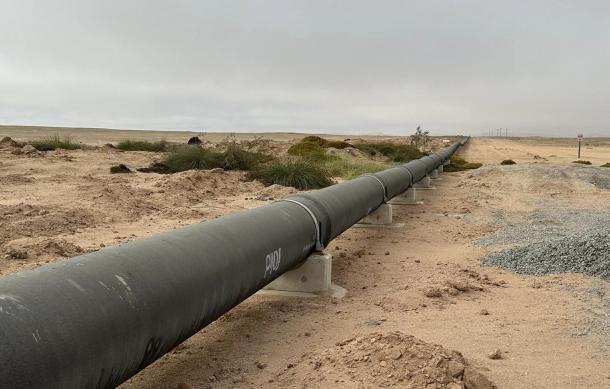
NamWater has started with Phase 3 of its upgrade of the Kuiseb Collector pipeline near Walvis Bay.
The renovations are expected to be completed by next year to ensure a reliable and integrated water supply at the coast.
The Kuiseb and Omdel aquifers have traditionally provided towns on the central coast with water, with the Orano desalination plant joining the list of providers at a later stage.
The government drilled boreholes and built pipelines to supply water.
Constructed in the 1970s, the 80-kilometre Kuiseb Collector 2 pipeline near Walvis Bay is one such infrastructure, but it is ageing.
"A number of sections of this pipeline have already been replaced, and this is due to the fact that, given its age, we have been experiencing water losses. Ja, pipe breaks quite often, so as we speak, out of the whole 80 kilometres, we have already replaced a large portion of it; it's only 18 kilometres that are yet to be replaced," said Saltiel Shanika, an engineer at NamWater.
The government has spent more than N$1 billion over the past decade on upgrading the pipeline.
The Agriculture, Water, and Land Reform Minister, Carl Schlettwein, says the upgrades have strengthened the region's integrated water supply.
"Swakopmund was supplied from Omdel, and Walvis Bay was supplied from Kuiseb. When Kuiseb floods and our system fails here, Walvis Bay runs dry. When Omdel is overly abstracted and we have to limit water abstractions, this collector pipe is part of the project that connects the Kuiseb resource with the Omdel resource, so that we can supply water from Omdel to Walvis Bay and reduce the risk of a failing system in the Kuiseb, and vice versa. We can now supply Swakopmund with Kuiseb water to relieve the stress on the Omdel and rationing of water."
The minister says it is crucial for Namibia to have water security because the impact of climate change is becoming severe in an already arid environment.
He emphasised the government's commitment to constructing a second desalination plant—one not directly impacted by drought, like underground water sources.
The feasibility study and financing options have been concluded, and construction of the plant is expected to start in 2025.





